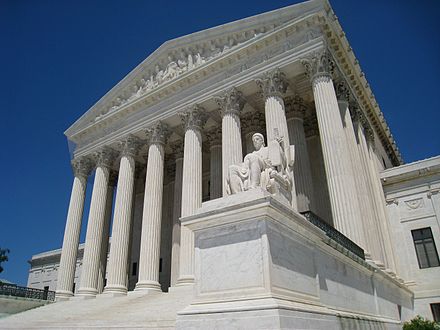1908 cartoon, by W.C. Morris, highlighting the dangers associated with the football.
“Football is football and talent is talent. But the mindset of your team makes all the difference.”
–Robert Griffin III, Quarterback, Baltimore Ravens and 2011 Heisman Trophy Winner
As Americans prepare for fall and football, the new political season kicks off the day after Labor Day with public hearings in the Senate Judiciary Committee as part of the confirmation process of Federal Appeals Court Judge Brett Kavanaugh’s nomination to the Supreme Court. Little is known about the judge’s mindset or how he’ll play on the team. And during the upcoming televised stagecraft partisan Senators will likely get bogged down in jurisprudential minutia unintelligible to every day people.
So here are some questions that might elicit better insights:
1. Judge Kavanaugh, on Jan. 22, 1973, the court affirmed the legality of a woman’s right to abortion under the Fourteenth Amendment to the Constitution. Since that time, it is estimated that there have been over 60 million abortions in the U.S. It is still a contentious issue. Much has changed in those 45 years: biological and scientific revelations, legal and economic assumptions, and political and social values. Given all we know today, what are your thoughts on “fetal viability”? Is it time to reconsider that concept as it applies to constitutional law? Why or why not?
2. Since the Supreme Court was established in 1789 there have been a total of 113 people who have served on the high court. Of this elite and select group — among the living and the dead — whom do you most admire and why?
3. You worked in the 1990s on the team (led by Independent Counsel Kenneth Starr) investigating the Whitewater matter. Those efforts eventually, and remarkably, led to the impeachment of President Bill Clinton. In February 1998, you were part of a panel discussion about the future of the Independent Counsel Statute (1978). You raised the question of whether a sitting president could be subject to criminal indictment at all. (You called it a “lurking constitutional issue” that should be “resolved so that we can determine whether the Congress or an independent counsel can investigate a president when his conduct is at issue.”) What are your thoughts on the matter today? What parallels do you see between the investigation of Clinton and today’s investigation using an independent counsel that is edging ever so close into the red zone of President Trump’s presidency?
4. What is the most important opinion you have written as an appeals judge? Why?
5. Here’s a riddle: Which of the following is considered in some circles a violation of state and federal law and hence an affront to individual liberties? (A) Requiring identification to board a plane. (B) Requiring ID to purchase cigarettes and alcohol. (C) Requiring ID to open a bank account. (D) Requiring ID to enter into corporate and government offices. (E) Requiring ID to vote in state and federal elections. If you guessed “E” you are correct! If public officials initiate steps in choice E, are such measures unconstitutional? Why or why not? Might any of these be deemed unconstitutional? Why or why not? On the night President Trump nominated you to the court, did you need to show ID to walk into the White House?
6. Since the inception of the court, there have been 91 Protestant judges named out of 113 justices. Roger B. Taney was the first Catholic to serve on the court, beginning in 1836. In more recent times, Catholics have dominated the court. At one point, when justice Antonin Scalia was alive, there were six Catholic justices on the same court. If you were to be sworn in to the court today you would be the fifth Catholic justice (joining John Roberts, Clarence Thomas, Samuel Alito, and Sonia Sotomayor). How has your Catholic faith shaped and informed your judicial philosophy? Did the court get it right last year in the separation of church and state case Trinity Lutheran v Comer?
7. Are The Federalist Papers still relevant today in terms of interpreting and understanding the original intent of the Constitution? Why or why not?
8. In an October 2016 ruling, PHH v Consumer Financial Protection Bureau, in a case involving the unbridled power of what some would call extra-constitutional congressional creations, you wrote that, “Indeed, other than the President, the Director of the CFPB is the single most powerful official in the entire United States Government, at least when measured in terms of unilateral power.” You added, “The concentration of massive, unchecked power in a single Director marks a dramatic departure from settled historical practice and makes the CFPB unique among independent agencies.” Can you further articulate your philosophy on the separation of powers and overreaching executive authority? What other government entities, in your estimation, resemble those of the CFPB?
It remains to be seen on Sept. 4 if Brett Kavanaugh will fumble the opening kick off or return it for a long touchdown. But it is certain he will be brushing up on the playbook.
James P. Freeman is a New England-based essayist and a former banker.
















